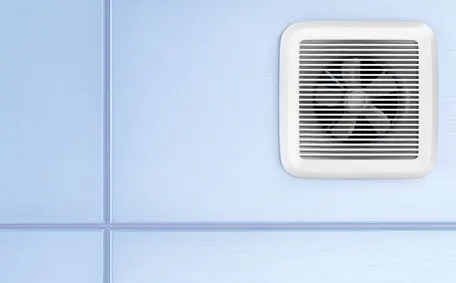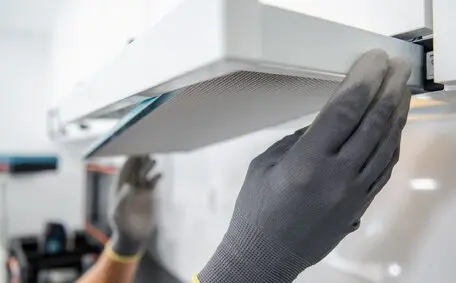
How To Maintain Your Exhaust Fan
Prevent mould and ensure good indoor air quality with our expert tips on maintaining your bathroom exhaust fan. Get professional advice on when to handle it yourself and when to call experts.
Read MoreGood ventilation is key to keeping homes and buildings healthy and comfortable. Without enough airflow, moisture, odours, and pollutants can build up, causing poor air quality and health concerns.
Exhaust fans play a crucial role in addressing these concerns. They effectively remove stale, humid air and replace it with fresh, clean air, helping to control moisture levels, eliminate odours, and improve overall air quality.
However, with numerous available options, choosing the right exhaust fan for your specific needs can take time and effort. This comprehensive guide explores the key factors to consider when selecting an exhaust fan, from understanding noise levels to energy efficiency and installation considerations.
After reading this guide, you will be well-equipped to make an informed decision and ensure optimal ventilation in your space.
An exhaust fan is a handy device that helps clear stale, moist, or polluted air from a room, pulling in fresh air from outside. It works by creating negative pressure to suck out unwanted air through ducts, venting it outside the building.
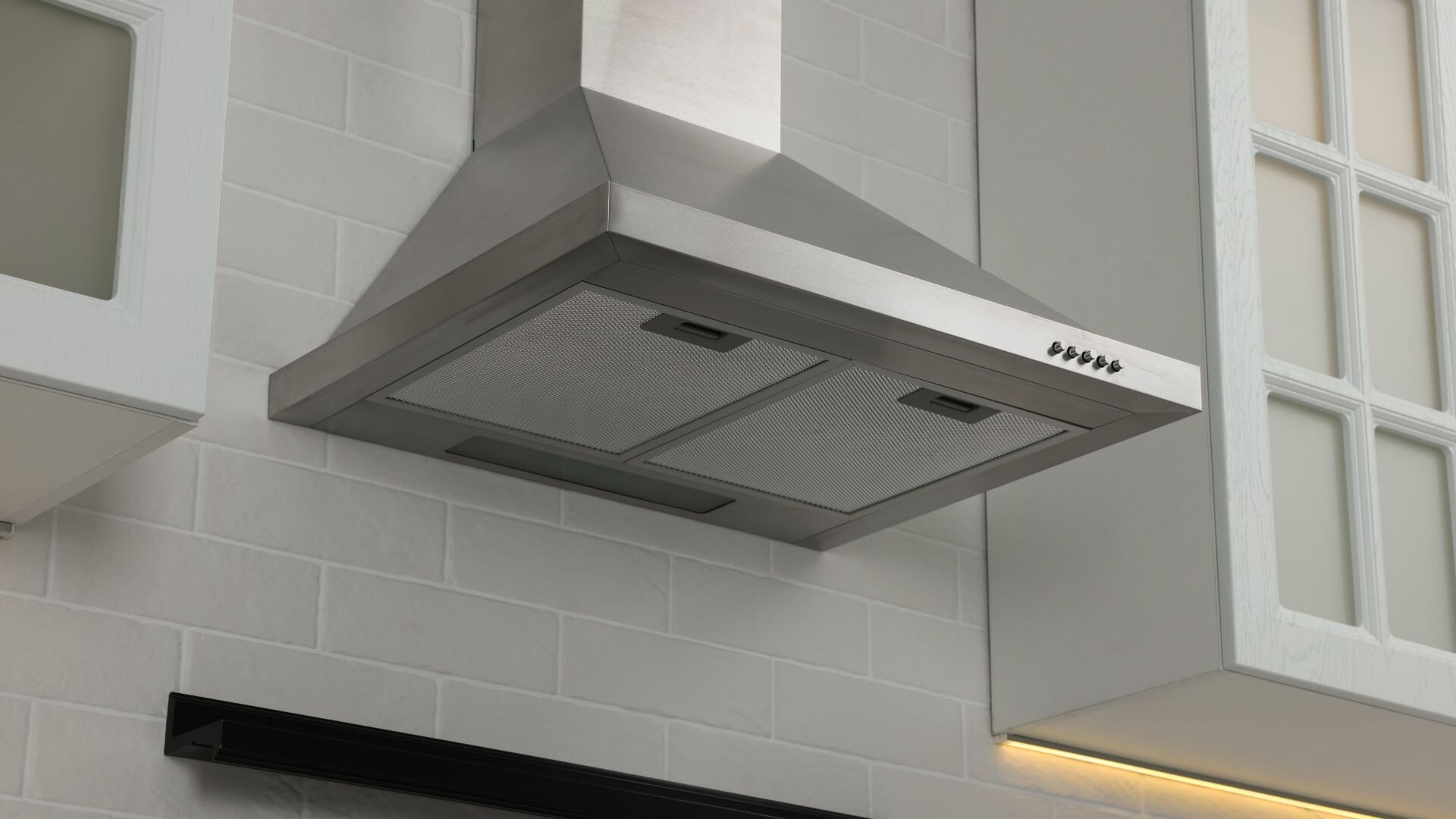
This process helps to regulate humidity levels, prevent the growth of mould and mildew, and maintain a comfortable and healthy indoor environment. Ceiling fans can also contribute to better airflow, complementing the role of exhaust systems. Exhaust fans come in various types to suit different needs and installation requirements.
Ceiling exhaust fans and inline exhaust fans are particularly effective options, offering flexibility for different spaces and layouts. The installation of exhaust fans offers numerous benefits for homes and buildings. Moisture control is a key advantage, as exhaust fans prevent the build-up of humidity that can lead to dampness, mould growth, and structural damage. These systems also improve air quality by reducing airborne particles and pollutants. Odour removal is another significant benefit, as exhaust fans eliminate unwanted smells from cooking, cleaning, and other activities, keeping the indoor air fresh and pleasant.
Improved air quality and circulation are also achieved with exhaust fans, contributing to a healthier living environment and reducing the risk of respiratory issues and allergies. These advantages make exhaust fans an essential component of any well-ventilated space.
Selecting the right exhaust fan for your space involves carefully considering several key factors. These factors ensure the fan will effectively meet your ventilation needs while providing a comfortable and efficient living environment.
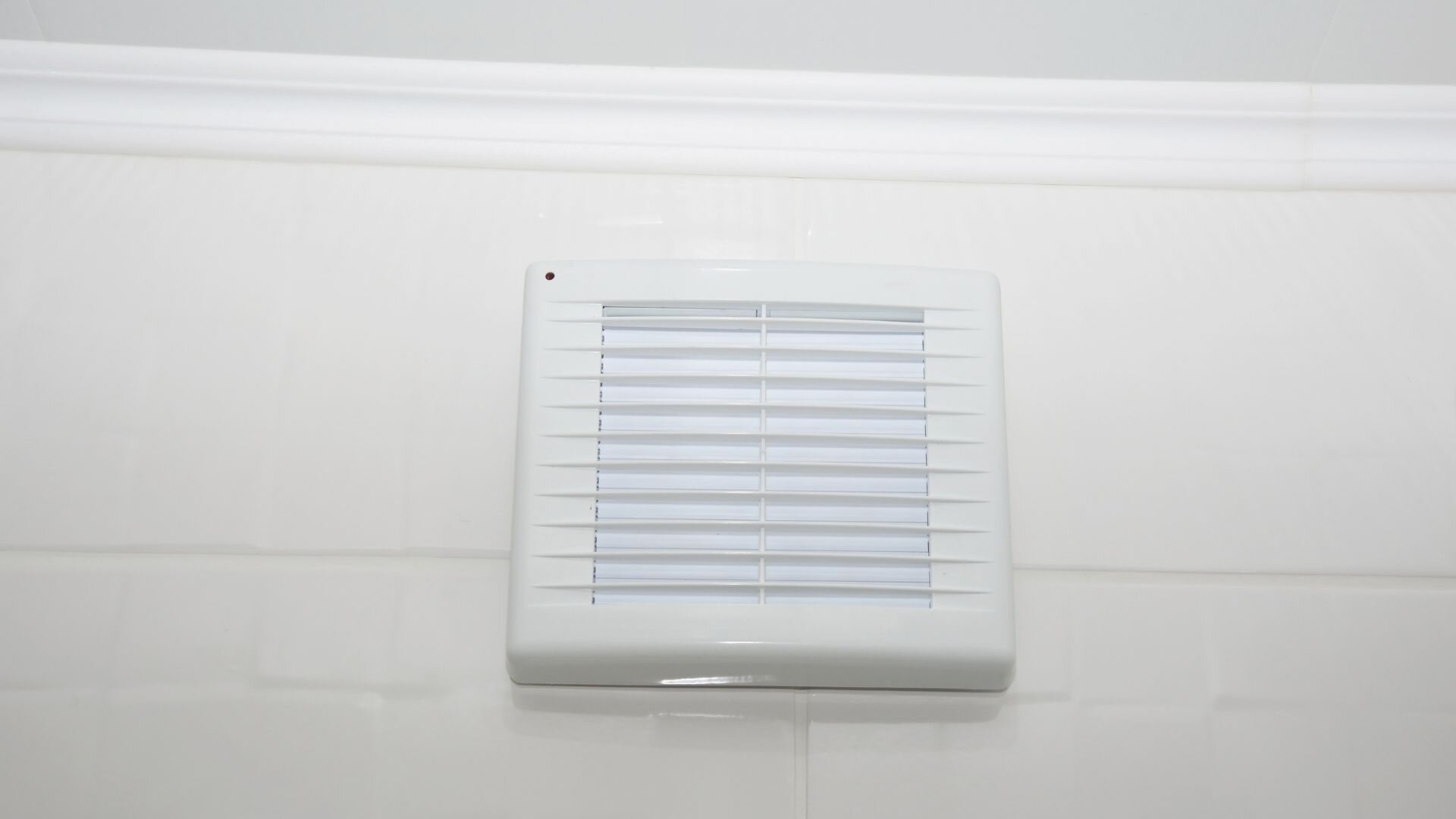
The first thing to consider is the size of the room and how much airflow it needs, measured in litres per second (L/s). To work it out, measure the room’s area and multiply it by the recommended air changes per hour (ACH) for that room type. The Building Code of Australia (BCA) provides these minimum ventilation requirements.
For example, according to the BCA, bathrooms and toilets require a minimum exhaust ventilation rate of 25 L/s for rooms up to 10 square metres and an additional 2.5 L/s for each square metre above 10. Kitchens need a minimum exhaust ventilation rate of 25 L/s, with a further 12.5 L/s for every square metre of cooktop area.
Laundries also have specific requirements, with a minimum exhaust ventilation rate of 20 L/s for rooms up to 10 square metres and an additional 2 L/s for each square metre above 10.
A larger room or a space with higher moisture levels will require a fan with a higher L/s rating to ensure adequate ventilation and compliance with Australian building standards.
In Australia, fan noise is typically measured in decibels (dB), with lower dB ratings indicating quieter operation. A fan with a noise level of 35-45 dB is considered very quiet, while ratings above 50 dB may be disruptive.
The Building Code of Australia (BCA) does not specify a maximum noise level for exhaust fans. However, choosing a fan with a noise level appropriate for the specific room type and your personal comfort preferences is generally recommended.
For bedrooms and other quiet areas, selecting a fan with a noise level of 35-45 dB is advisable to ensure a peaceful and comfortable environment. In bathrooms and kitchens, where some noise is expected, a fan with a noise level of 45-50 dB may be acceptable.
When comparing exhaust fan models, check the manufacturer’s noise level ratings. Some brands may also offer "quiet" or "silent" models specifically designed for low-noise operation.
Going for a fan with a low dB rating makes your living space more pleasant and cuts down on noise disturbance.
Energy efficiency is important when selecting an exhaust fan, as it can impact your energy bills and environmental footprint. In Australia, the Energy Rating Labelling system helps consumers compare the energy efficiency of various appliances, including exhaust fans.
The Energy Rating Label displays a star rating from one to six stars, with more stars indicating better energy efficiency. It also shows the annual kilowatt-hours (kWh) consumption based on standard usage assumptions.
When shopping for an exhaust fan, look for models with a high star rating (ideally 4 stars or more) and lower annual energy consumption. High-efficiency fans use less energy to operate, resulting in lower running costs and reduced environmental impact over time.
Some exhaust fan manufacturers also incorporate energy-saving features such as adjustable speed settings, timers, and humidity sensors. These features allow the fan to operate only when needed, further reducing energy consumption.
When shopping for an exhaust fan, consider models that offer additional features and functions to enhance convenience and energy efficiency. Modern exhaust fans often come equipped with built-in timers, humidity sensors, motion sensors, and even Bluetooth connectivity.
Timers allow you to set the fan to run for a specific duration and automatically shut off once that time has elapsed. This feature ensures proper ventilation without wasting energy by running the fan longer than necessary. Humidity sensors, however, detect moisture levels in the air and automatically activate the fan when humidity rises above a preset threshold. This helps prevent the growth of mould and mildew, which thrive in damp environments.
Motion sensors are another useful feature, particularly for fans installed in rooms with intermittent use, such as bathrooms or laundry rooms. These sensors detect movement and turn the fan on when someone enters the room, then automatically switch it off after a period of inactivity. This hands-free operation saves energy and extends the fan’s lifespan by reducing unnecessary running time.
Some high-end exhaust fans even offer Bluetooth connectivity, allowing you to control and customise the fan’s settings through a smartphone app. This feature provides the ultimate convenience, enabling you to adjust the fan’s speed, set schedules, and monitor its performance remotely.
When choosing an exhaust fan, consider its performance, functionality, appearance, and how well it complements your interior design. Fortunately, manufacturers offer various styles, colours, and finishes to suit different decor preferences, ensuring you can find an exhaust fan that seamlessly blends with your home’s aesthetic.
For those with a modern or minimalist decor, sleek and streamlined exhaust fans with clean lines and understated colours like white, silver, or black may be the perfect choice. These fans often feature a low-profile design that sits flush with the ceiling, creating a seamless, unobtrusive look.
If your home has a more traditional or classic style, opt for an exhaust fan with decorative elements, such as ornate grilles or oil-rubbed bronze finishes. Some manufacturers even offer fans designs that resemble vintage or antique styles with intricate detailing and charm.
In addition to the fan itself, you can consider models that incorporate built-in lighting or can be paired with compatible light fixtures. This combination of ventilation and lighting enhances convenience and adds a stylish touch to the room. You can choose from various light styles, such as soft white for a cosy ambience or bright LED for a crisp, modern look.

Getting the right size for your exhaust fan is essential for good ventilation and performance. In Australia, the sizing depends on the room’s size and the needed air changes per hour (ACH), as per the Building Code of Australia (BCA).
To determine the appropriate size for your exhaust fan, follow these guidelines:
Installing an undersized exhaust fan can lead to adequate moisture and odour removal, while an oversized fan may save energy and create excessive noise. To ensure effective and efficient ventilation, choose a fan with the appropriate L/s rating for your space in accordance with the BCA requirements.
Regular cleaning and maintenance are essential to ensure your exhaust fan’s longevity and optimal performance. Dust, dirt, and debris can accumulate on the fan blades and grille, reducing airflow and efficiency. Clean the fan blades and grille using a soft cloth or brush every few months. Remove the grille and soak it in warm, soapy water for deeper cleaning. Always disconnect the power supply before cleaning or performing any maintenance tasks.
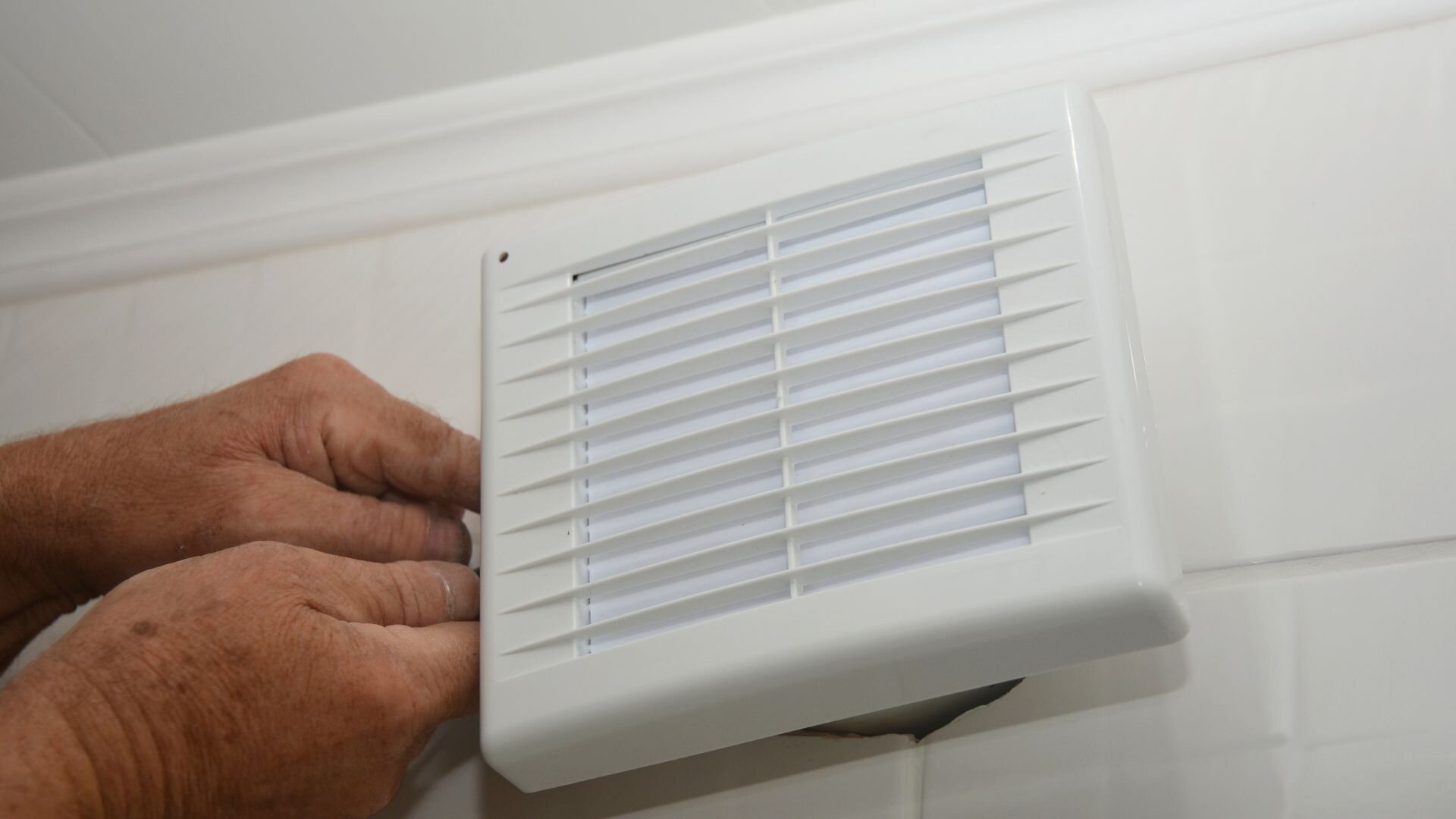
Common issues with exhaust fans include excessive noise, vibration, and reduced airflow. If the fan becomes noisy or vibrates excessively, check for loose mounting screws or worn-out bearings. A fan that doesn’t move enough air may have a clogged grille or ductwork, or the duct run may be too long or have too many bends. Cleaning the grille and ensuring the ductwork is clear and properly sized can help resolve these issues.
If your exhaust fan is over ten years old, has sustained damage, or is no longer functioning effectively despite maintenance efforts, it may be time to replace it. Newer models offer improved energy efficiency, quieter operation, and enhanced features that benefit your home’s ventilation system.
Investing in a high-quality exhaust fan is crucial for maintaining a healthy and comfortable indoor environment. This guide has covered essential factors to consider when choosing an exhaust fan, including room size, airflow requirements, noise levels, energy efficiency, and additional features. We’ve also discussed the importance of proper sizing, installation, maintenance, and troubleshooting to ensure optimal performance and longevity.
When you improve the air quality indoors, you’re making a healthier space for you and your loved ones. At Bright Force Electrical, we’re here to help you choose the perfect exhaust fan for your needs.
With our expertise in electrical services and commitment to customer satisfaction, you can trust us to guide you through the process and ensure a successful installation. Contact Bright Force Electrical today to schedule a consultation and breathe easy, knowing your indoor air quality is in good hands.
Did you enjoy reading our article “Choosing the Right Exhaust Fan”? We have many related articles you may also be interested in reading, like the below:
Prevent mould and ensure good indoor air quality with our expert tips on maintaining your bathroom exhaust fan. Get professional advice on when to handle it yourself and when to call experts.
Read MoreMould thrives in damp environments. Exhaust fans help eliminate excess moisture, a key factor in mould prevention. This guide explains how exhaust fans work to combat mould growth and keep your home healthy.
Read MoreExhaust fans are crucial in maintaining optimal indoor air quality by removing pollutants, moisture, and odours from various spaces. Explore the benefits of installing exhaust fans and how they contribute to a healthier indoor environment.
Read MoreWe will call back as soon as possible.

